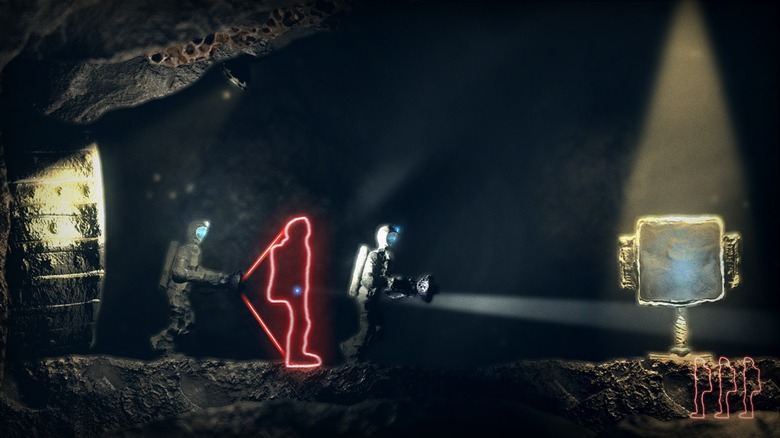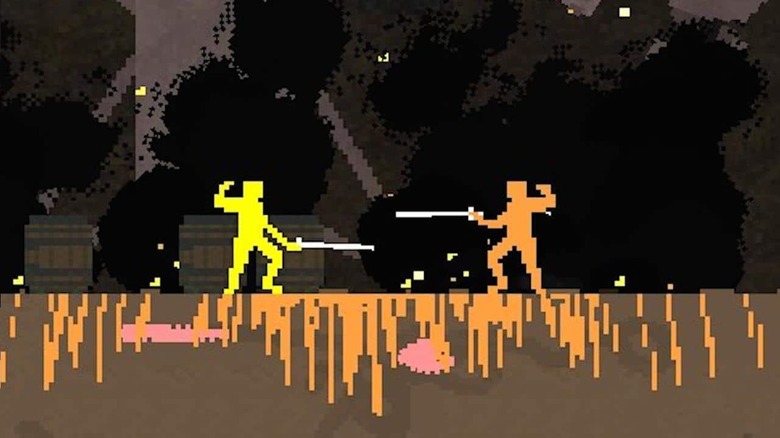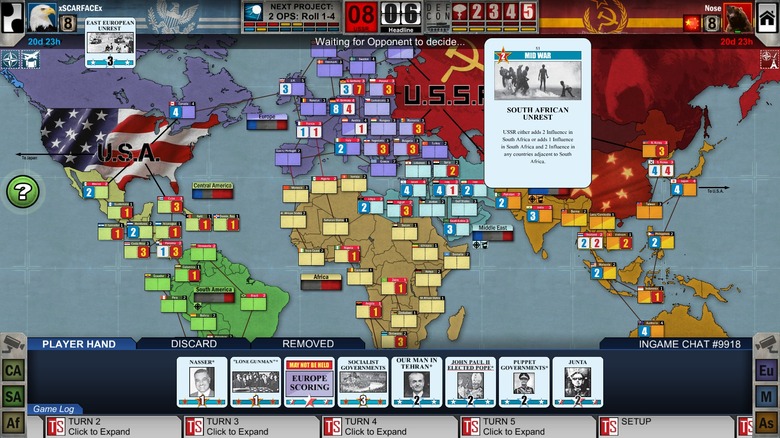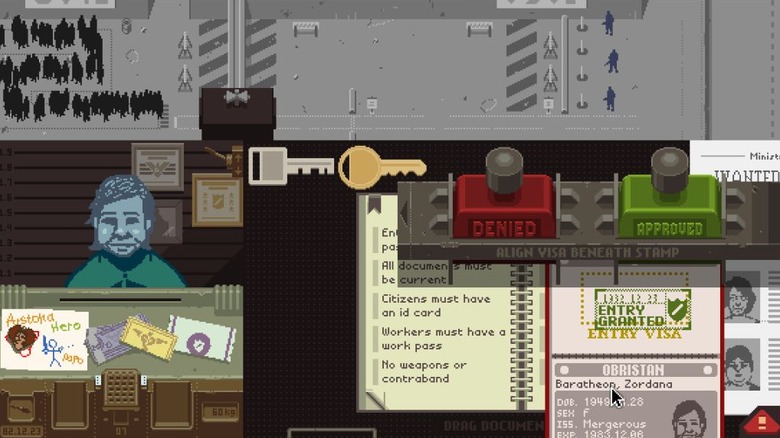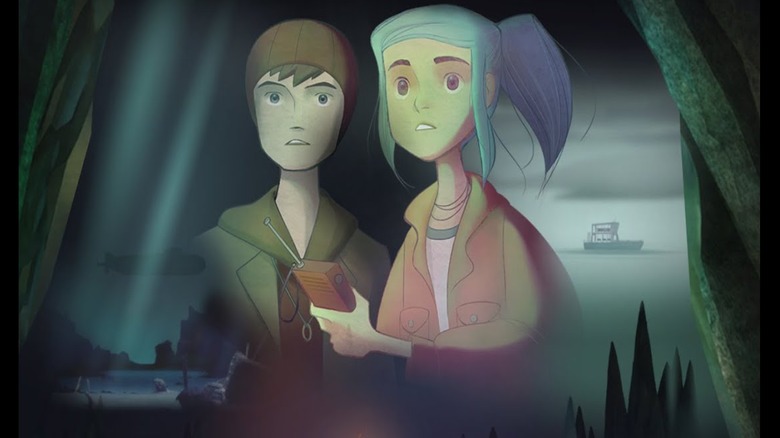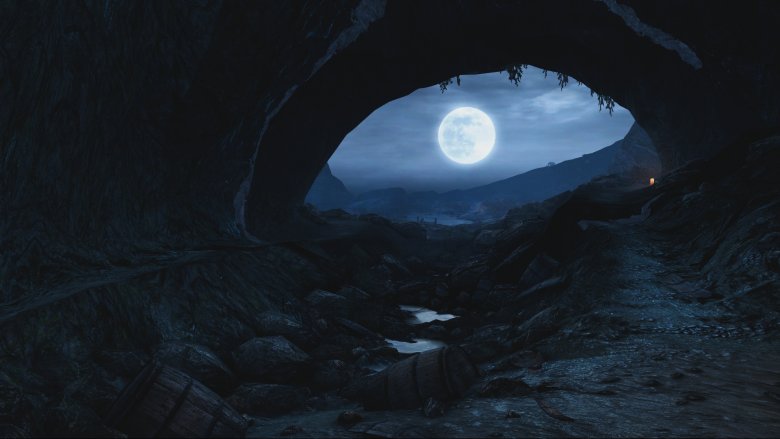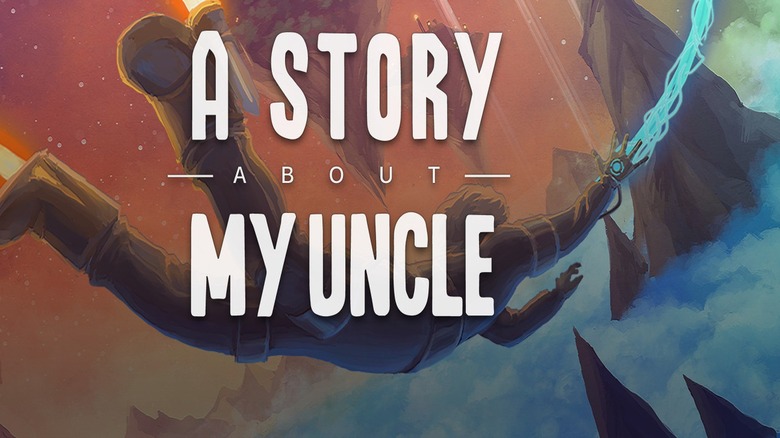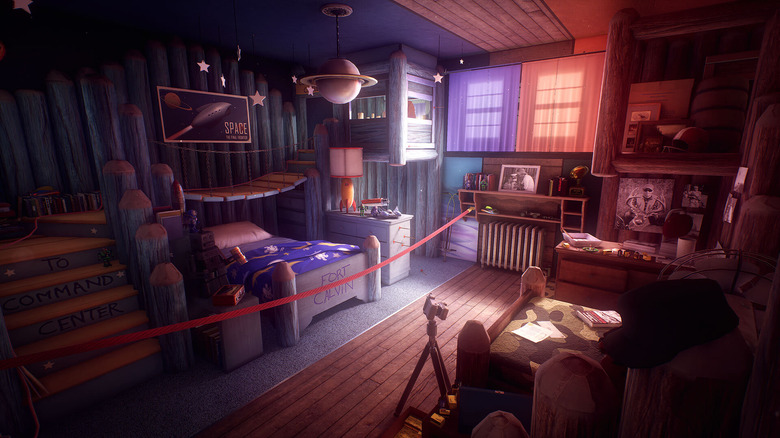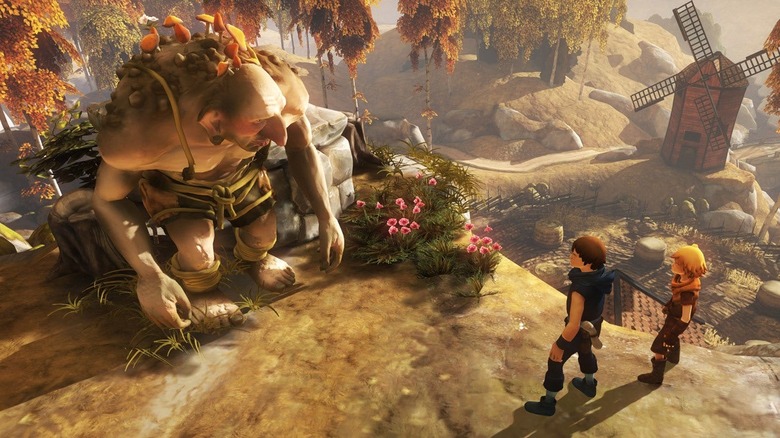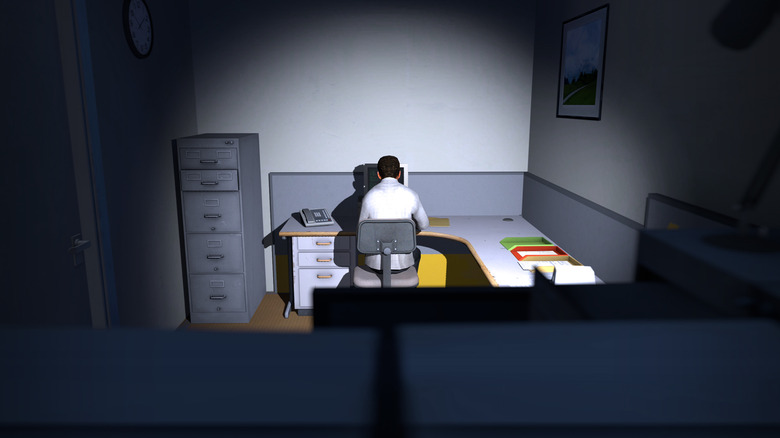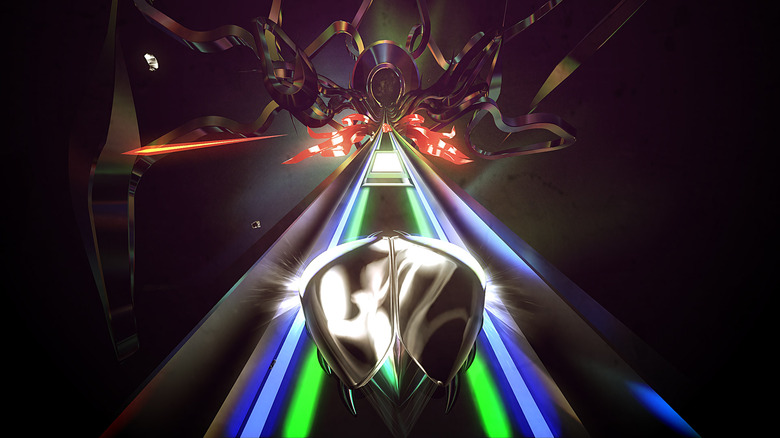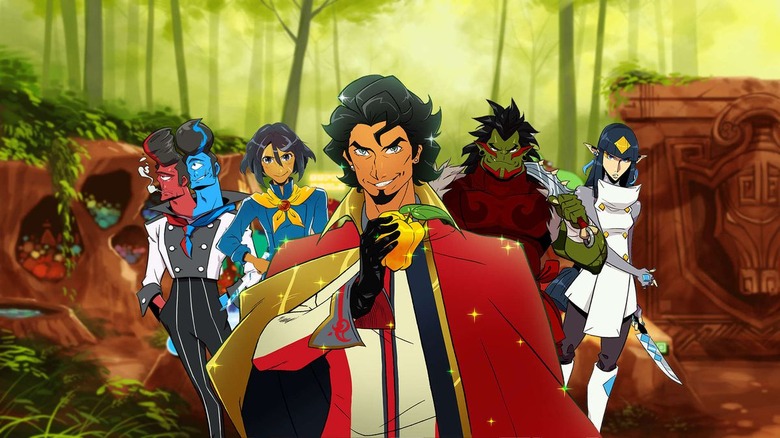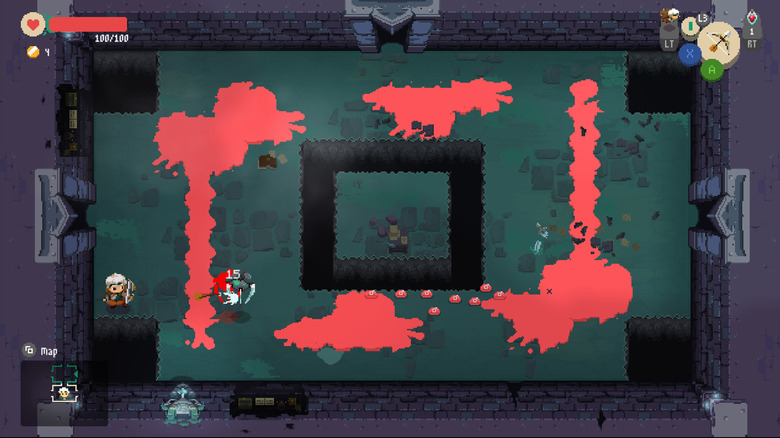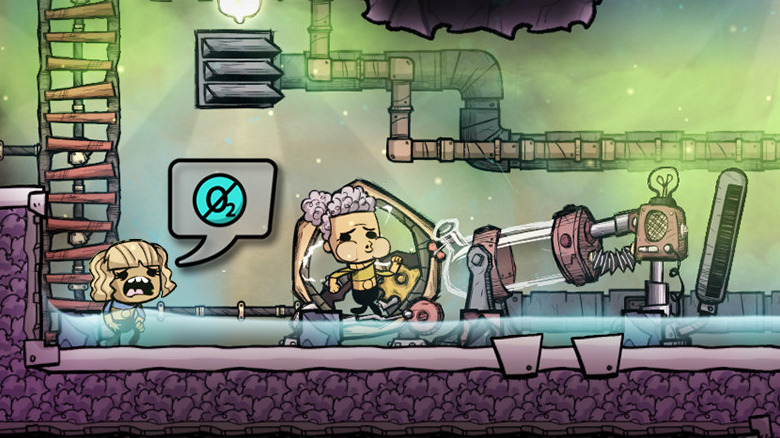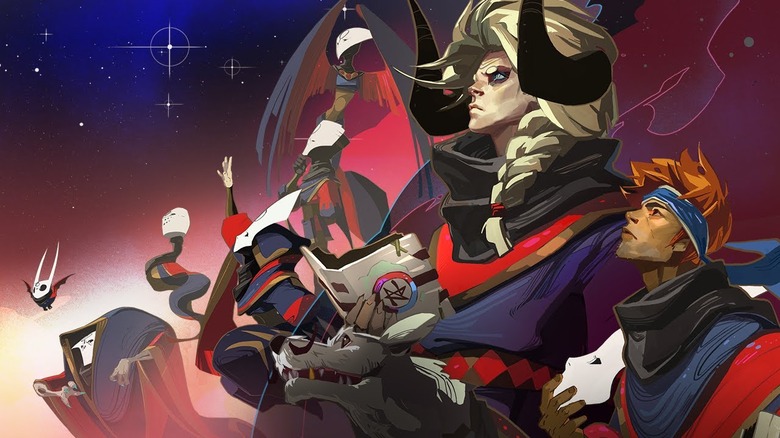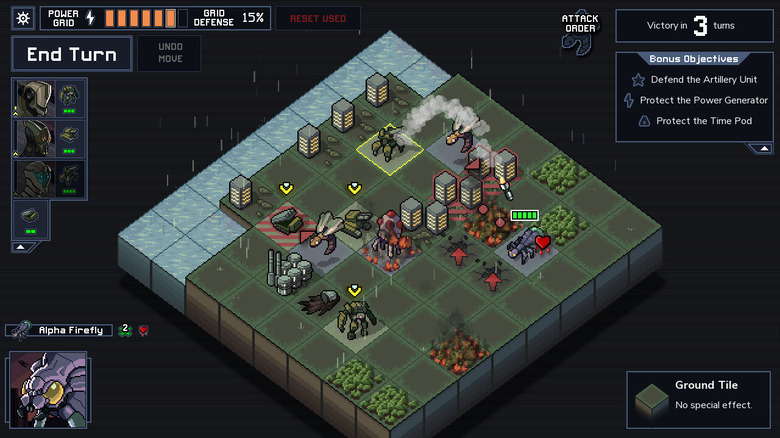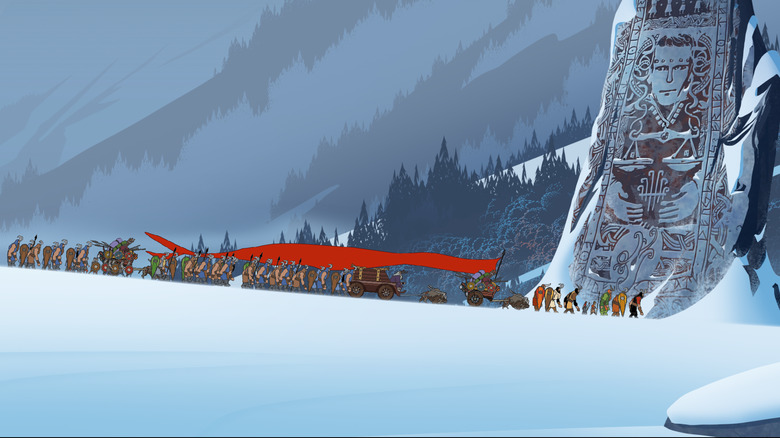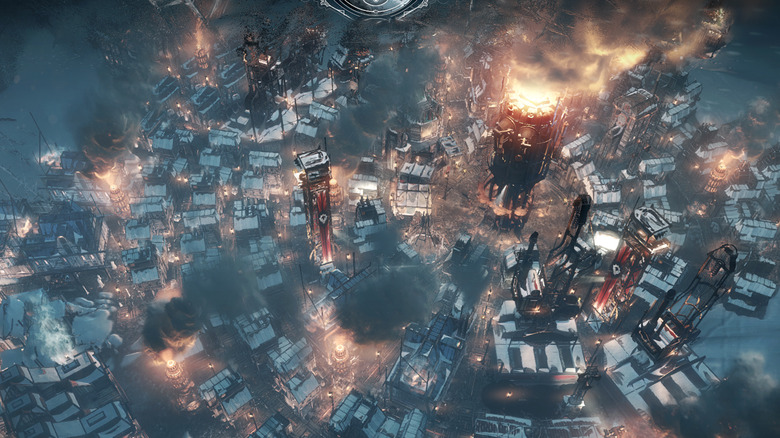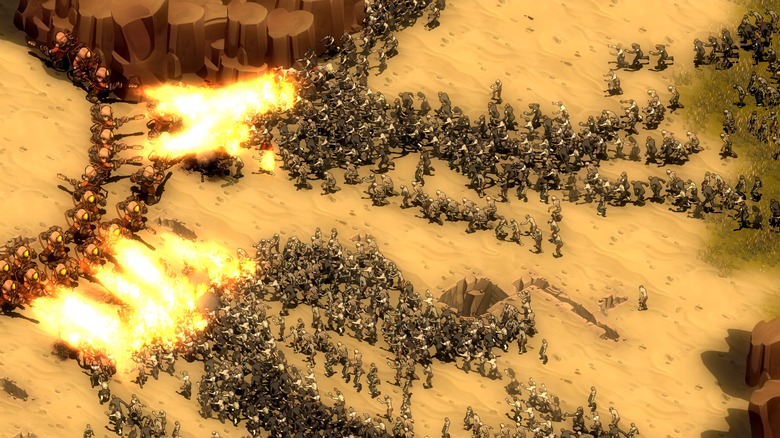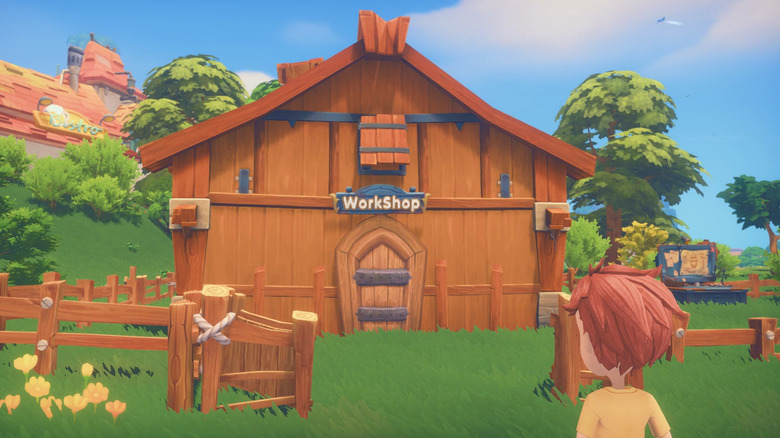Hidden Gems On Steam
When Valve released its Steam platform in the early 2000s, nobody knew quite what it was. A matchmaker for Counter-Strike? A store where you could download games off the internet... legally? Did anybody actually want this? The answer over the next fifteen years has been a resounding yes, as Steam has grown into the single largest platform for PC games. Since anybody can sell their products on Steam, Valve collects a cut of sales for an enormous array of titles, earning billions in revenue every year. Rising to the top of the Steam sales or playtime lists is a mark of pride for any developer.
But in that enormous library, there are a lot of titles that don't see as much attention as the big-budget AAA games. A major publisher can purchase ads on Steam, or get themselves on the top of the front page. These days, Steam will accept a game from just about anyone, including tiny studios that may be as small as just a few people. They might never top any sales charts, and might never get featured on any page. But that doesn't mean they can't be classics. From puzzle games to platformers, from fairy tales to the Cold War, here some of the very best hidden gems on Steam.
Sniff out The Swapper
Facepalm Games' The Swapper released to little fanfare in 2013, coming from a tiny studio with basically no marketing budget. But even if they did have a marketing budget, The Swapper is still a tough one to explain: you're trapped on a space station where everyone else has disappeared, you have a gun that only makes clones of yourself, and the narrative is driven by rocks. Huh? On paper, it sounds like a mess, and shouldn't work at all.
But The Swapper is one of the most inventive releases in years, featuring both brain-twisting puzzles and an intriguing narrative mystery. On the gameplay side, the player uses a mysterious tool that allows him to clone himself, and then 'swap' between those clones. The trick is, all those clones move in exact tandem: move your lead character right, and every clone will do the same thing. Positioning those clones just so in order to get past the variety of traps and obstacles is incredibly simple to understand — and yet devilishly hard to execute.
On the story side, that very same mechanic raises questions of identity: who am I, if I am constantly "swapping" bodies? What does any of this have to do with the missing crew? And just why are all these strange rocks planted throughout the station? The Swapper explores all of these questions and more in a simple, minimalistic style that is an exact match for the atmosphere of the experience. It's a truly unique game that a majority of Steam users have probably never stumbled across.
Fight your way to finding Nidhogg
If you're looking for the absolute last word in graphical superiority, well... Nidhogg isn't that game. Made by a small team called Messhof, Nidhogg features a heavily-pixelated art style drenched in pastel colors. To look at it, it seems like some slap-dash creation thrown up on Steam to make a few bucks.
But that belies the true strength of Nidhogg: its pitch-perfect swordplay mechanics. These, too, might seem simple on the surface. If the sword ever touches the enemy, the enemy dies: there's no hit points (though there are infinite lives). But getting the pointy end into the other man is the whole thrust of the game, and where Nidhogg truly shines. The player can hold the sword in a variety of positions, and block from the same. Stabbing with the sword might give you victory over your enemy, but also gives the enemy a window to disarm you first. Every single move you make is a calculated risk; every single one can be countered by a clever opponent. What appears to be amateur on the surface is revealed to be sublime underneath.
The sequel, Nidhogg 2, features a very different art style, and also introduces a swath of new weapon types. But the fundamentals are still there: intense one-on-one encounters where the slightest move can mean your triumph or your defeat. This young franchise from a small team proves that ultra-competitive gold doesn't have to come from a huge studio.
The Twilight Struggle is real
If Twilight Struggle appears at first glance to be a board game in digital form... well, that's because it is. But this isn't just any game: Twilight Struggle was the number one-rated game on all of Board Game Geek for years. Covering the entire arc of the Cold War, the game puts players in the shoes of either the United States or the Soviet Union as they try to convince other countries to join their side, outmaneuver their opponent, and manage an endless series of crises. Winning requires an exquisite blend of short- and long-term planning, while constantly dealing with catastrophes around the world.
What elevates Twilight Struggle above its competition is the interlocking nature of the mechanics. Crafted like a Swiss watch, every single action in the game affects multiple elements. That means the player juggles a variety of problems, opportunities, and threats within a single move, while simultaneously trying to think three moves ahead. And that's not even mentioning what the opponent might do. But beware: any card in your hand that benefits your opponent must still be played! Sometimes, there's a disaster waiting no matter what you do. Navigating those disasters to victory is the core of the experience.
The digital version is more or less a direct copy of the original board game, with a few quality of life improvements thrown in. Plus, the AI can take the role of your opponent, letting you relive the Cold War for hours on end.
The drama of drudgery in Papers, Please
If there's a polar opposite to the action-heavy, graphically-intense blockbuster AAA game genre, it's Papers, Please. Taking the role of an immigration agent in a failing Communist country, the player must admit or deny entry to travelers. That's it. There's no shooting, there are no dialogue prompts: there's nothing else the player does. Admit entry or deny. Rinse, repeat.
But within that simple mechanic is a devilishly clever game design, that is at once challenging, thought-provoking, and tense. Knowing who should be admitted requires memorizing a constantly shifting set of regulations, that you must then verify with every traveler or be docked pay. And that's before people start making you offers: let my people in, and we'll topple this horrid dictatorship; let these other people in, and we'll give you a bribe; deny access to those people, or we will fire you from your post. These aren't choices you select from a list, they are options you are presented with. How do you choose which to follow, and which not to? Admit entry, or deny. Exactly who is up to you.
With its pixelated graphics and minuscule budget, Papers, Please was never going to be the sort of game that millions of people played. But those that have know what a treasure it is: a completely unique, deceptively complex game with dozens of possible outcomes based on a morally difficult yet mechanically simple series of choices. Just hope you're permitted entry when you try to play it.
In Oxenfree, teenagers go to an island...
Teenagers go to an island to have a bonfire and get drunk. Sounds pretty straightforward. And it is — until time-warping creatures are summoned into existence by radio signals and begin to possess your friends and alter reality. Oxenfree is a blend of horror, science-fiction, and teen drama, bouyed by its charming characters and witty dialogue. Plus, time-loop shenanigans.
Gameplay is relatively simple, based mostly on exploration and puzzle-solving. These aspects aren't wildly complicated: the game is more concerned about leading you on a journey than it is about challenging you at every turn. But at the same time, the game does present you with a series of choices. Who will you try to rescue first? What advice will you give about dealing with the situation, and about the budding series of romances around you? How will you negotiate with the time-creatures themselves? There are enough possibilities here to allow for a wide array of possible endings.
Teenagers go to an island to have a bonfire and get... Whoa, didn't this section already happen? Anyway, a recent patch for the game has added in a New Game+ mode, which remembers your previous playthrough and adds in new narrative possibilities, with new endings to match. That allows for many hours of replayability. And for true completionists, the game might take dozens upon dozens of hours to get everything. Not bad for a little indie game.
Teenagers go to an island to have a bonfire and get... Wait... haven't we been here before...?
Walk towards Dear Esther
In Thechineseroom's Dear Esther, you... walk. That's it. You never even have to click the mouse, or press any other button than the movement keys. You walk. There's no labyrinth to navigate, no mechanical puzzle to solve: you walk. From the beginning to the end. And it's great.
Dear Esther is a dreamlike tone poem, an exploration of the subconscious of a devastated man. Who he is, and what the nature of his heartache is, are the central driving mysteries of the experience. A narrator speaks every once in a while, in lyrical terms. It's up to the player to carefully examine the environment for clues, while dissecting the narrator's vague monologues. To be clear, this isn't just left open to interpretation: there is a solid backstory to be discovered.
But don't let the destination get in the way of the journey itself. While you'll be following a set path, the environment art is absolutely gorgeous, featuring everything from deserted beaches to glimmering caves. This is a dream you're walking through, so not everything has to conform to reality — just to beauty, and to tragedy. The point is to absorb your surroundings on the way, and soak in the atmosphere.
Don't rush through this one. In fact, you can't: the game doesn't even give you the ability to run, and the walking speed is deliberately slow. In a world of twitch-reflex games, Dear Esther challenges you to take your time.
Listen to A Story About My Uncle
Gone North Games' A Story About My Uncle is surprisingly robust for an indie title, featuring a multi-hour campaign, 3D-platforming, good graphics, and a huge diversity of art assets. The game itself represents a bedtime story brought to life, as a father regales his young daughter with — you guessed it — a story about his uncle. What is that story? Well, it involves interdimensional travel, fish people, floating cities, and a family revelation. Which is the best kind of bedtime story.
Mechanically, it's a platformer-puzzle game where the platforming is the puzzle. How do you get from Point A to Point B? The environments are enormous and present a variety of possible answers, some of which are tricks, and several of which are not. They key hook here is exactly that: a hook, or a magnetic tether that can attach to nearly any surface and which you can swing from. Since much of these environments are floating and moving, timing your tether-and-swing motions — often in chain-succession — is a surprisingly challenging yet endlessly fun gameplay loop.
On top of this, the different 'chapters' of the story each contain a completely distinct environment: anything from glowing caves to impossible cities. The art design is spectacular, and you may just catch yourself looking around rather than jumping off to the next platforming section. A Story About My Uncle is a small game that feels big.
Dive into Abzu
Journey from thatgamecompany is one of the most famous indie games ever made, an absolutely gorgeous voyage across an alien landscape that mirrors an internal one towards understanding. Journey's art director then went on to create his own shop, Giant Squid Studios, and with it a brand new game: Abzu.
Abzu also involves moving through a lush and gorgeous environment, in this case, underwater. The player will traverse everything from kelp forests to strange mechanical structures, and along the way, can play with the teeming biodiversity on display underneath the waves.
Just who, precisely, the gamer is actually playing is one of the title's core mysteries. Broadly looking like a diver with his humanoid form and elongated fin-feet, this character never surfaces for air, and eventually reveals abilities that no human should have. What this means is that the character's movements are more pronounced, fluid, and beautiful than any human could possibly achieve. Abzu is not so much about diving as it is about thriving under the sea. While the game can technically be completed in a short amount of time, the point isn't to rush through: it's to revel in your mastery over the sea, just like the fish you'll be swimming with.
Discover What Remains of Edith Finch
The sophomore effort from developer Giant Sparrow, What Remains of Edith Finch is actually a number of different games all rolled into one. You play as a young woman returning to her childhood home to learn more about her family history. But this is no ordinary house; rather, it's a surreal extension of the family itself in the form of a building.
Asymmetric, multi-tiered, and full of wonder, the house itself is really the star of this show. Each room belongs to a specific family member, and the interior reflects that particular character in ways both subtle and profound. But more than just a household tour, What Remains allows you to play through the eyes of each character that the various rooms belong to. These side-games are clever, inventive, and always surprising. If the house itself seems dreamlike, these other experiences take that to a whole new level.
The overall theme of the game is heartbreaking, and for a game brimming with such lightness, it still deals with some shocking events and disturbing elements. This is a feature, not a bug. What Remains of Edith Finch doesn't set out to give you nightmares, but it does pull at your heartstrings, and some of the family stories will stick with you long after the end credits roll. What remains of Edith Finch is the impact that she leaves on you.
Brothers: A Tale of Two Sons is sibling rivalry at its best
Starbreeze's Brothers: A Tale of Two Sons contains what may well be the most emotional button press in the history of video games. If you haven't played it, that claim might not make any sense; if you have, then you probably agree. Requiring a controller to play, Brothers is designed around the innovative idea that you control two characters simultaneously: specifically, two brothers. Your left hand controls one character, and your right another. Learning to use your hands in tandem like this mirrors the brothers' attempt to work together as a team. As you get better at reconciling your two halves, so do they.
Brothers is set in a beautifully realized fairy-tale world, complete with trolls, crazy inventors, abandoned towers, and bloody-minded cults. Through it all, the brothers are inseparable, and only together can they solve the various puzzles they encounter, or defeat the handful of powerful enemies they encounter. Along the way, they will meet heartbreak, tragedy, and love — sometimes all at once.
The end profoundly changes up the experience, and expresses concepts of loss and growth in mechanical ways that no other game has tried. The final result is wholly unique, both childish and mature all at the same time.
Learn from The Stanley Parable
Galactic Café's The Stanley Parable is based around the simplest mechanic of all: choices. Not in the sense of a list to choose from, but simply by doing... anything. Go left, or go right? Push the button, or don't? Obey, or defy? The game presents the player with choice after choice, and then lets the player decide on their own what to do on their journey.
And it's a strange enough journey at that. An office drone with a surreal data entry job, Stanley suddenly finds that his computer screen has gone blank. After being shocked speechless that such a thing could ever occur, he steps outside his office... to find his workplace abandoned. Meanwhile, a narrator constantly informs the player what to do. And yet, the player, as Stanley, doesn't always have to follow what the narrator says. Sometimes the narrator is fine with a little divergence; sometimes he gets quite upset; and sometimes, he forces the player right back to where Stanley was supposed to go all along.
Bizarre and funny and insightful all at once, The Stanley Parable is itself a thought exercise on the nature of free will, and the consequences of seemingly trivial decisions. It doesn't take all that long to play through, but with all those decisions and a variety of possible endings, there's a lot of replay value there. The only choice left now is for you, the reader of this article: will you play it yourself, or not?
Thumper is frightening rhythm violence
You remember the heyday of rhythm games, right? Plastic instruments, a bunch of friends getting silly and singing Journey together? Or maybe the bright colors and sense of flow that a game like Rez brought to the table?
That is most certainly not Thumper's place in the rhythm genre. It stomped those feel good games and left them on the curb.
Thumper is billed on its Steam page as "rhythm violence." You play as a space beetle, flying down a track and inputting button combinations in time to a series of obstacles and a pulse-pounding soundtrack. It's simplistic, brutal, and scarier than any rhythm game has a right to be. The first time you come over a hill, the industrial soundtrack builds, and a huge monster appears on the horizon, staring you down and dwarfing your tiny craft, you know you're in for an entirely different beast from Guitar Hero.
PC Gamer calls Thumper "profoundly unsettling to play," "brutal and relentless," and claims it has an "atmosphere of malevolence and doom." It also gave it a glowing review; all those comments were given out of love of just what a unique experience Thumper is able to conjure up.
Battle Chef Brigade is anime meets Iron Chef
How do you feel about a game that sees you compete in timing-based cooking battles like you would see on Food Network, while using a stylish, match-three system to replicate adding the perfect level of seasoning to a dish? What if, in order to obtain the ingredients you cook with, you had to hunt down the creatures that will provide you with the ingredients you need? And what if all of this was wrapped in an outrageous, anime-inspired plot with the fate of the world resting solely on your kitchen knives?
Polygon calls Battle Chef Brigade "a fun, weird, totally intriguing fantasy world." Like all the best cooking shows and RPGs, it inserts plenty of humor to an otherwise deadly serious storyline, which makes everything even funnier than it has a right to be. Battle Chef Brigade will make you want to play more just to see where the bonkers storyline goes, but its interesting gameplay and unique presentation make it more than just a flash in the pan experience.
Moonlighter tasks you with collecting loot, then selling it in an item shop
One of the best ways for an indie game to find an audience on the crowded Steam marketplace is by picking an unexplored theme or setting. Moonlighter is not entirely original; a few games have already done what it does. But there isn't anything on Steam that combine Moonlighter's styles of gameplay in quite the same way.
Moonlighter puts you in the shoes of an adventurer named Will, who journeys through Legend of Zelda-style dungeons in a quest to obtain more loot. The twist comes from what happens between dungeon adventures, when you have to set up shop and decide which of your dungeon-gotten goods you're going to sell in order to restock your character for the next run.
Eurogamer's Malindy Hetfeld writes that Moonlighter's sense of rhythm and timing "would suck me in for hours at a time." The way the game is broken up makes it very easy to say, "I'll do one more run before I go to bed," over and over until the sun starts to come up.
Oxygen Not Included puts you in charge of a space colony with hilarious results
Klei, who created Oxygen Not Included, is an absolutely remarkable developer. They also put together lovely little games like Mark of the Ninja, Don't Starve (and all its permutations), and Invisible, Inc. So far, however, Oxygen Not Included seems like it has flown under the radar more than its predecessors, but it also seems to offer the most depth and room for hilarity.
Oxygen Not Included is a colony management simulator that tasks you with making an alien world viable for life. It is far more deep than it initially seems, with a huge network of interconnected systems constantly causing new problems and breaking your patchwork solutions. As you set your colonists out to repair machinery, poisonous gas from the other end of the colony might start to creep in. Build some air purifiers, and suddenly you're out of fuel. Mine more fuel, and dangerous monsters might come along with it.
Oxygen Not Included is a game about keeping your plates in the air as long as possible, knowing that they are going to come crashing down at some point. PC Gamer calls it "a heck of a lot of fun," despite the fact that it's in Early Access. It seems like every month introduces a huge, new update, so you'll definitely get your money's worth here.
Pyre is a beautiful combination of genres
Pyre is one of those rare games that feels like an entirely new and original experience. A bizarre gameplay combination of sports game, visual novel, and RPG, Pyre puts you in control of a character named only "the Reader." You join a band of outcasts traveling through a desert wasteland, coaching them through a basketball-like game that can grant them freedom from exile.
It's a bizarre storyline, but damn if Pyre doesn't just make it all work. Developer Supergiant Games brought us the criminally underrated Transistor as well as indie heavy-hitter Bastion, and Pyre fits into an even more esoteric, but every bit as charming, role in the developer's catalog. Polygon praises the game's originality and depth, and the way its fascinating storyline adapts to the results of your game.
Pyre is beautiful, interesting, and downright fun. The difficulty ramps up well and introduces all sorts of new wrinkles to the core gameplay, and the characters are all memorable and intriguing. Check it out; we doubt you'll be disappointed.
Into the Breach offers more strategy than many AAA titles
Into the Breach looks far too simple to be much fun. Do not let its Windows 95 aesthetic fool you: this is a deep, difficult turn-based strategy game that will have you obsessively poring over every available option — right before you muck it all up and have to try to improvise a new solution.
It's made by the same team that brought us FTL: Faster than Light, another "Hey, this looks easy, so why do I keep dying?" type of game. Into the Breach is a grid-based war game where you must prevent alien invaders from destroying the last pockets of survivors. You are outnumbered and outgunned, but you have a distinct advantage: you know what every enemy is going to do on their next turn before you choose what each of your units will do.
This leads to some crazy-satisfying strategic options, where you will push an enemy in the way of another's attack, block a spawn point by freezing another enemy on top of it, and finish things off by drop kicking a third off a cliff. When a turn comes together just as you planned, the feeling of satisfaction is absolutely unreal, and it will almost make you forget all the times you pushed your own troops into harm's way and had to start back from square one.
The Banner Saga is a heavy, story-driven viking saga
IGN refers to The Banner Saga as a game that is "as bleak as it is beautiful." It's practically a what's what checklist of all the best parts of a legendary indie game: Amazing soundtrack. Beautiful, hand-drawn graphics style. Smart, unpretentious storyline. Unique combination of established gameplay mechanics.
Add all these ingredients together, and set it in a fantasy viking world. That's a recipe for a winner right there.
The Banner Saga does an excellent job of making you care about the different members of your ragtag army. They each have believable motives and realistic personalities, which will make you feel attached to a wide variety of them in many different ways. That makes the game's brutal, tactical combat even more stressful: you want to protect your favorites. The decision-making during the visual novel sections will twist you into all manner of uncomfortable situations, and the management of your traveling village will force you to make some gut-wrenching choices. There's a lot to love about this game and, best of all, it's got two equally entertaining sequels to go with it.
Frostpunk is cool, calculated, and challenging
Frostpunk is a steampunk colony management game where everything screams "cold." It's set in an alternate timeline where the world has slipped into another ice age, and it shows. The UI frosts over, even starting to crack a bit as the temperature drops. Your colonists trudge through chest-deep snow, carving out paths as they gather supplies and work. The game fully sells you on the atmosphere and world-building, and it is a perfect example of a "survival game" that doesn't involve punching trees to start things off.
The other way Frostpunk is able to pull you into its world is through the tough choices it forces you to make throughout. PC Gamer calls it "a crisis management game where the crisis doesn't end until the game does," and most of the biggest crises come from your concerned colonists. For example, one might approach you and mention that the colony needs more workers, and those good-for-nothing children certainly aren't earning their keep.
"You're the overseer of the colony," they might say. "So why don't you lower the minimum work age so we can get some use out of the able-bodied kids?"
There are plenty of tough choices you'll be forced to make as you struggle to keep your frozen colony running. Bundle up and check it out.
They Are Billions is as tough as it sounds
If failure is the greatest teacher, then They Are Billions wants you to know that class is in session. It looks like an average RTS, Starcraft with zombies or something like that. Quickly, you realize that this Early Access gem is a different beast entirely. Venture your troops outside of the safety of your starting location, and you'll find them quickly overrun by a zombie horde. They will then storm in and crush you.
So you stay put, building up a few units and upgrades. Soon, a warning will flash on the screen of a horde approaching from a certain direction. Your troops fight back, but their gunfire draws a seemingly unending wave of the undead. They will storm in and crush you.
Even though it is still in Early Access, They Are Billions captures that "one mistake and you're done" feeling of all your favorite zombie films. Rock Paper Shotgun wrote, "Most of my failures went from fine to bad to cataclysmic in about one minute." It's an RTS that takes good management, map awareness, build orders, and quick improvisation to succeed. Steel yourself for the final confrontation.
My Time at Portia is a charming and relaxing RPG
Do all these survival, "build up a colony and watch your digital citizens die" games bring you down? Take a gander at My Time at Portia. It is incredibly charming, with a bright, colorful style, a cast of fascinating characters, and a Stardew Valley-like approach to things. Instead of playing as a farmer, you work as a builder, working to improve the town of Portia by taking on quests to build up new shops, bridges, and other curiosities.
It may not sound like the most interesting concept, but listening to someone explain Harvest Moon and losing a few months of your life to Harvest Moon are two entirely different experiences, too. My Time at Portia is just a fun game to lose yourself in, even if you aren't advancing any of the game's various quests. Just wandering about town, exploring new areas, or growing crops (in the plant boxes you yourself built, natch) for an hour or so can be therapeutic and enjoyable.
Destructoid might say it best in describing My Time at Portia as "oozing" charm. It's just so dang optimistic and likable, you'll be hard-pressed to put it down once you've started it up.


